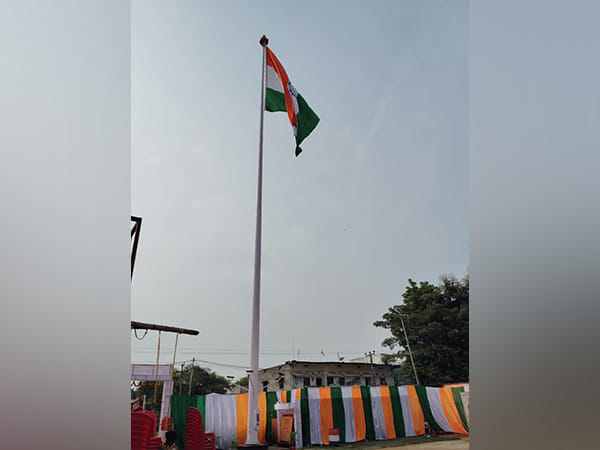Thank you dear subscribers, we are overwhelmed with your response.
Your Turn is a unique section from ThePrint featuring points of view from its subscribers. If you are a subscriber, have a point of view, please send it to us. If not, do subscribe here: https://theprint.in/
India, a land of contrasts and complexities, is known for its rich heritage, resilience, and adaptability. But along with these strengths lies a cultural tendency that often proves costly leading to irreversible loss and disasters — a preference for responding to crises rather than preventing them. Across sectors such as healthcare, infrastructure, disaster management, and personal safety, there is a visible pattern: action is frequently delayed until tragedy strikes. This reactive approach results in higher costs — both human and economic — than proactive prevention ever would.
A Cultural Psychology of Endurance
India’s deep-rooted spiritual and philosophical traditions often emphasize endurance, acceptance, and the idea of destiny. Teachings based on karma and fate have cultivated a mindset that leans more toward coping with consequences than preparing for them. While this has enabled people to face adversity with grace, it has also, in some cases, discouraged forward planning and risk mitigation.
This cultural disposition shows up in everyday life. Many individuals postpone essential health checkups, avoid buying insurance, or ignore safety measures under the assumption that bad things happen to “other people.” The emphasis is often on dealing with problems when they arise rather than taking preventive steps.
Real-World Patterns of Neglect
The consequences of this mindset can be seen in countless real-life scenarios. Take road safety, for example. India has one of the highest rates of road fatalities globally. Even though simple measures like wearing helmets and enforcing traffic rules could save thousands of lives, they are frequently ignored until a fatal accident forces action. Authorities often install traffic signals or speed bumps only after a series of accidents, never before.
Healthcare follows a similar trend. Preventive care such as regular screenings, vaccinations, or lifestyle counseling remains underutilized. Families tend to seek treatment only when illness becomes serious, leading to higher medical bills and poorer outcomes. This reactive approach places a heavy burden on both individuals and the public health system.
Natural disasters offer another stark example. Every year, floods, cyclones, and heatwaves disrupt lives and destroy property. Yet urban planning continues to ignore drainage systems, deforestation continues unchecked, and building codes are flouted. Relief and compensation are generously announced post-disaster, but investment in early warning systems, climate-resilient infrastructure, and community training is often insufficient.
Even in agriculture, where droughts and crop failures are common, farmers often lack access to early weather advisories or crop insurance. The response tends to come only after the damage has occurred — through debt waivers or emergency packages — rather than through long-term support systems.
Governance and Political Incentives
This reactive approach is not limited to individuals; it is mirrored in the behavior of institutions and governments. Preventive governance requires sustained effort, coordination, and budget allocation — with results that may not be immediately visible. In contrast, relief work after a tragedy offers instant visibility, media attention, and political mileage.
Repairing a collapsed bridge garners more attention than maintaining it. Announcing compensation for flood victims wins more praise than investing in drainage infrastructure. These incentives often lead to underinvestment in risk reduction and overreliance on post-crisis spending.
Additionally, India’s bureaucratic system often lacks coordination between departments. Policies that could avert disasters — like enforcing zoning laws or relocating vulnerable communities — are politically sensitive and frequently delayed. When decisions are made only after a crisis, they tend to be more expensive and less effective.
The High Cost of Inaction
Globally, studies show that every rupee spent on prevention can save multiple rupees in recovery. The cost of a flood early-warning system is far lower than the economic damage caused by unchecked flooding. Likewise, a modest investment in public health education can prevent expensive medical crises later.
In India, however, preventive programs often lack funding or political support or just general awareness. As a result, the country ends up spending vast amounts on rebuilding, recovery, and compensation. This approach is damaging for all but especially those who have fewer resources to recover from crises. One medical emergency or natural disaster can push anyone here into lifelong debt or in extreme cases depression and suicide.
A Cultural Shift Is Needed
To move from a reactive to a preventive culture, both mindset and systems must change. It starts with education. Schools should teach safety, health, and risk awareness from an early age. Preparing for emergencies should be seen as responsible behavior, not unnecessary worry.
Media and influencers must also play a role by spotlighting examples of smart prevention rather than just disaster coverage and any governments should reward officials for foresight and building resilience and not just crisis response.
At the personal level, families must begin investing in health insurance, home safety, and regular checkups. Communities can organize local disaster preparedness efforts, from mock drills to first-aid training. Technology — from predictive analytics to smart infrastructure — can amplify these efforts if used with intention.
Valuing Foresight Over Sympathy
India must shift from celebrating survival to valuing foresight. A truly strong society is not one that can only recover well from crisis — it avoids unnecessary crisis to begin with. Preventive action may be less visible, but it saves lives and reduces suffering.
If we want to build a safer system we must begin to value prevention as much as, if not more than, reaction. Because in the long run, the cost of not maintaining or even preparing to prevent is a cost none of us can any longer afford.
These pieces are being published as they have been received – they have not been edited/fact-checked by ThePrint.


